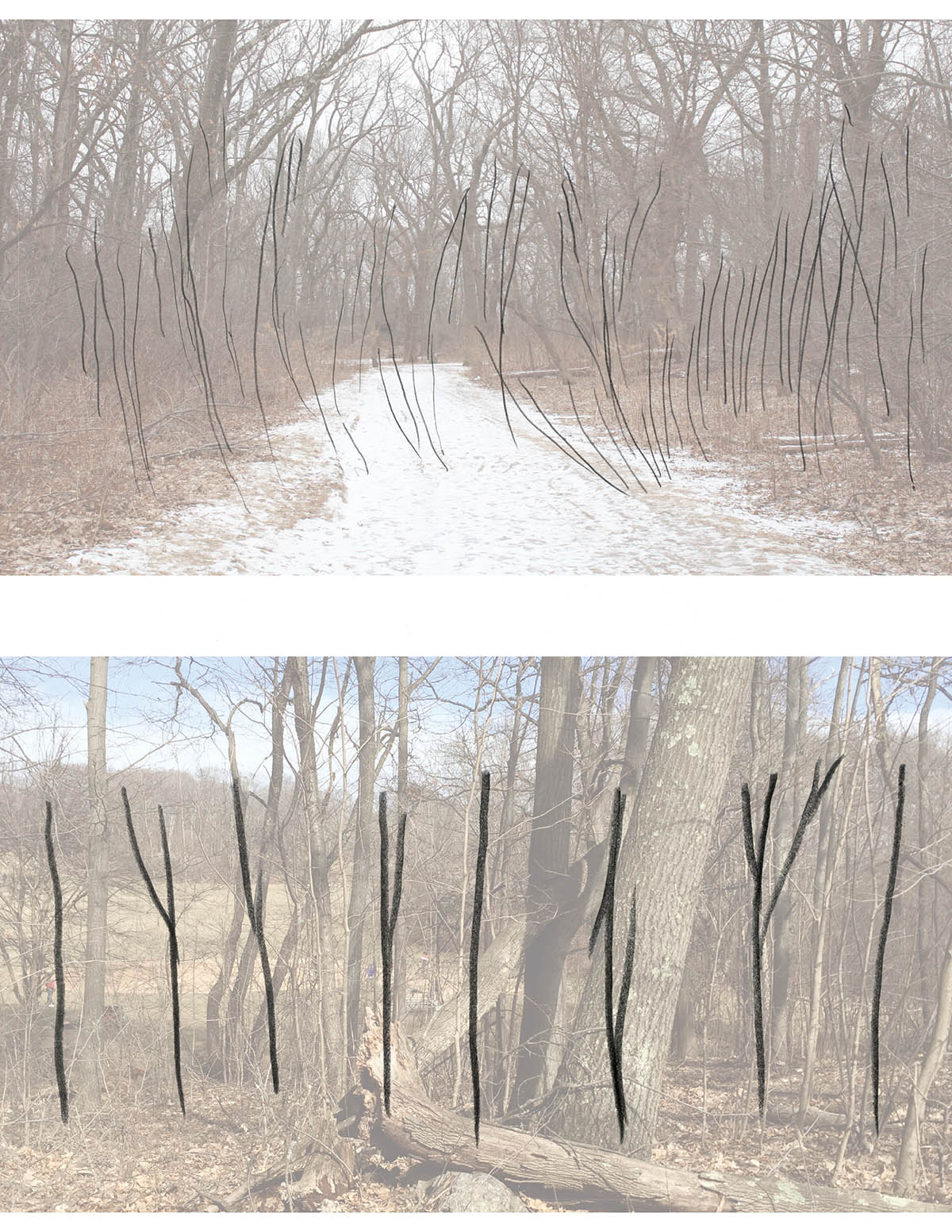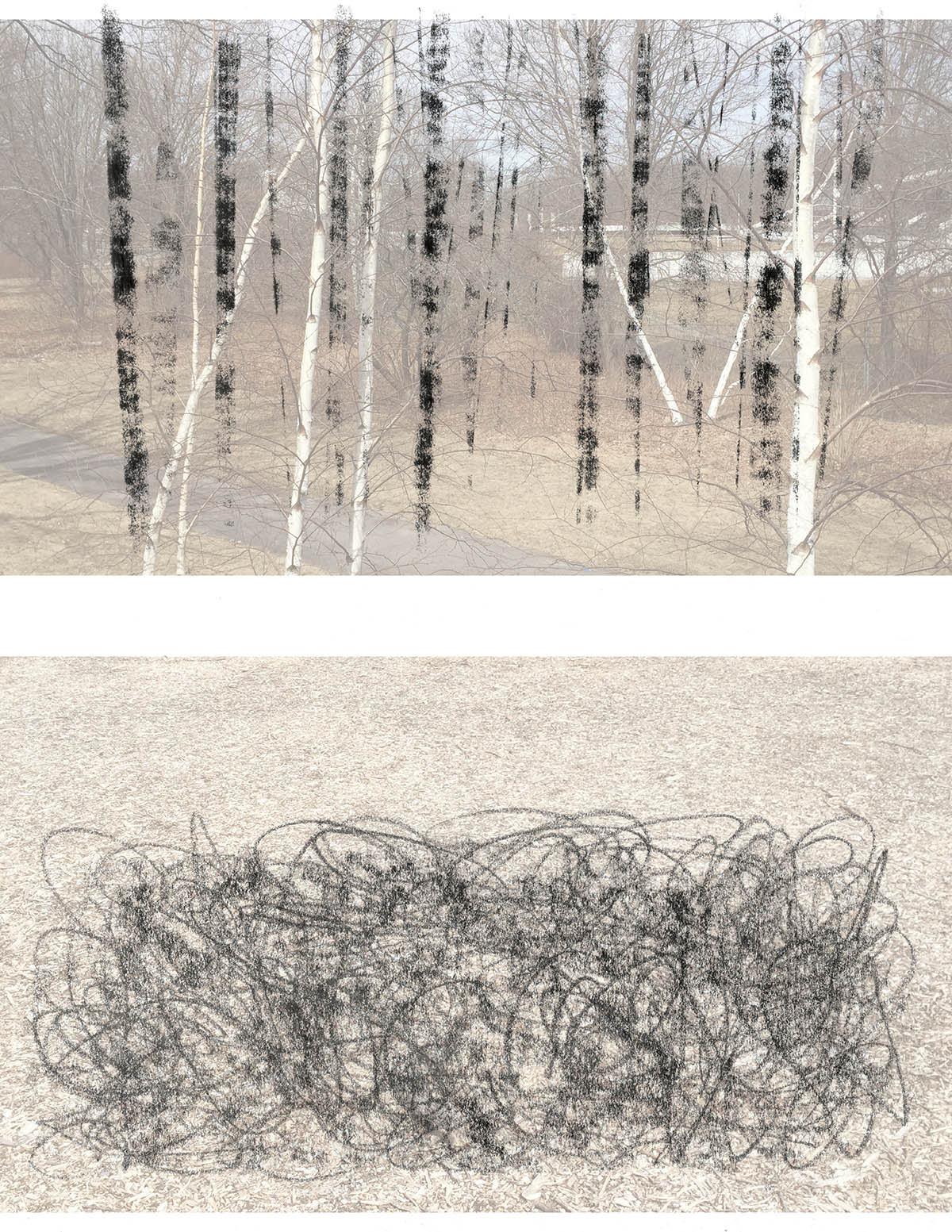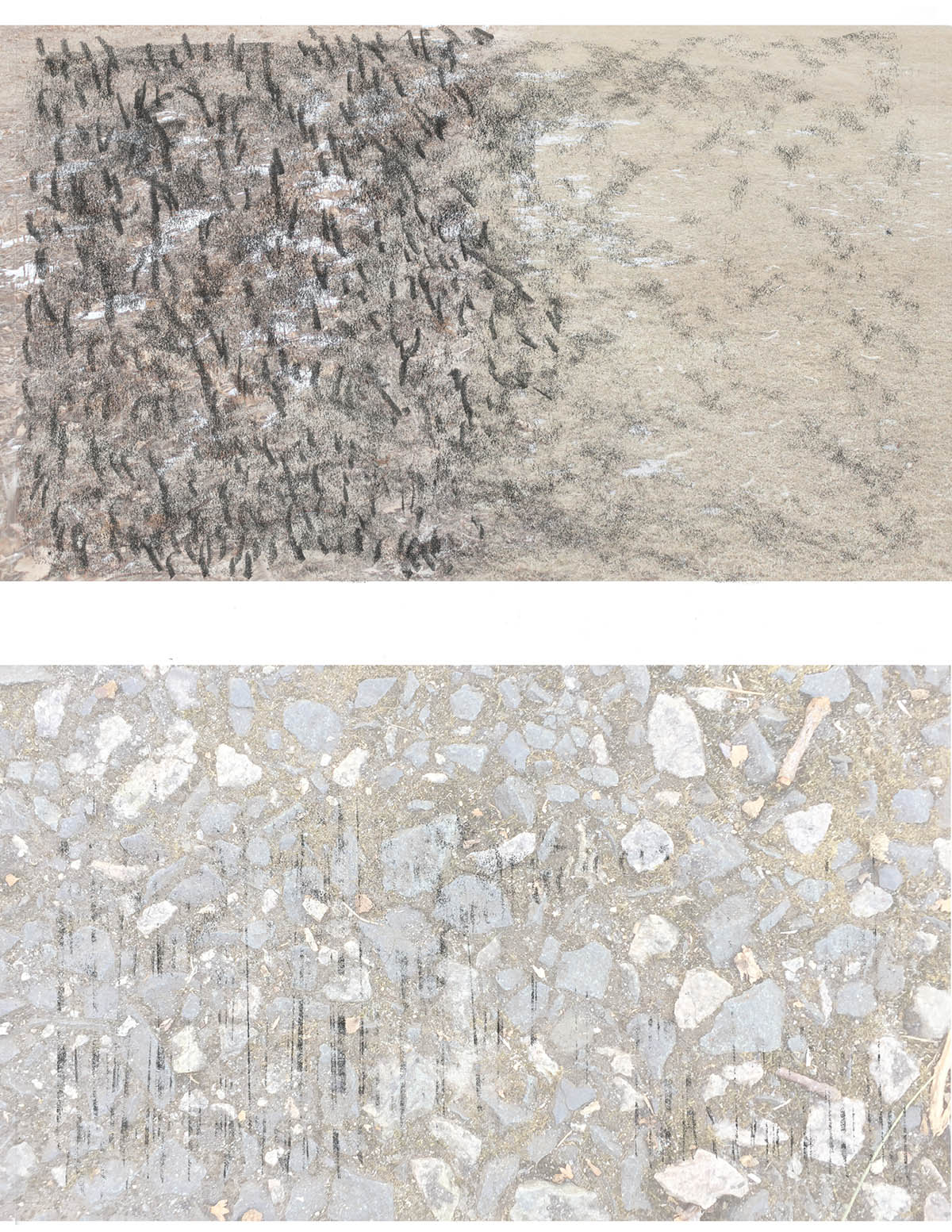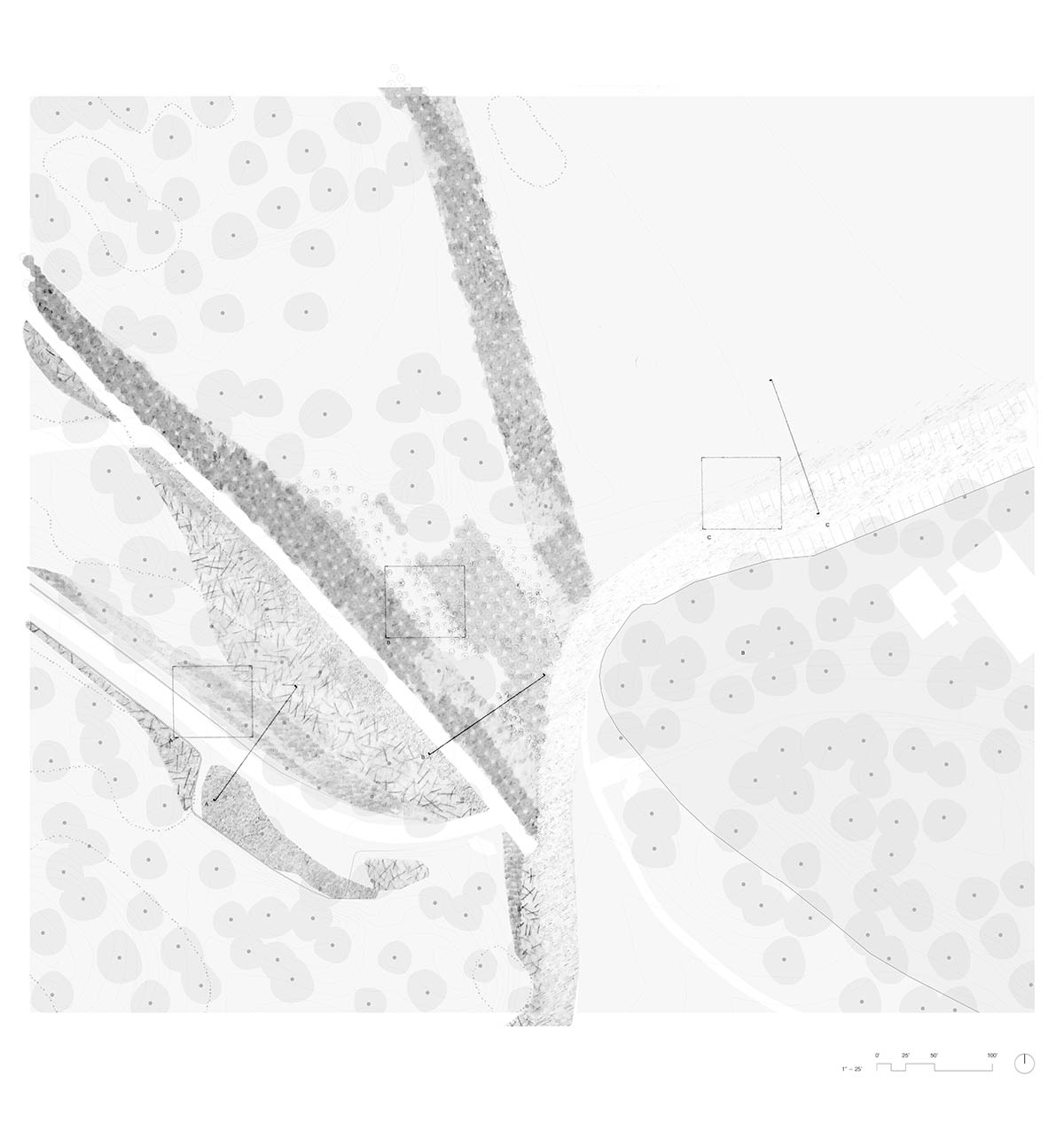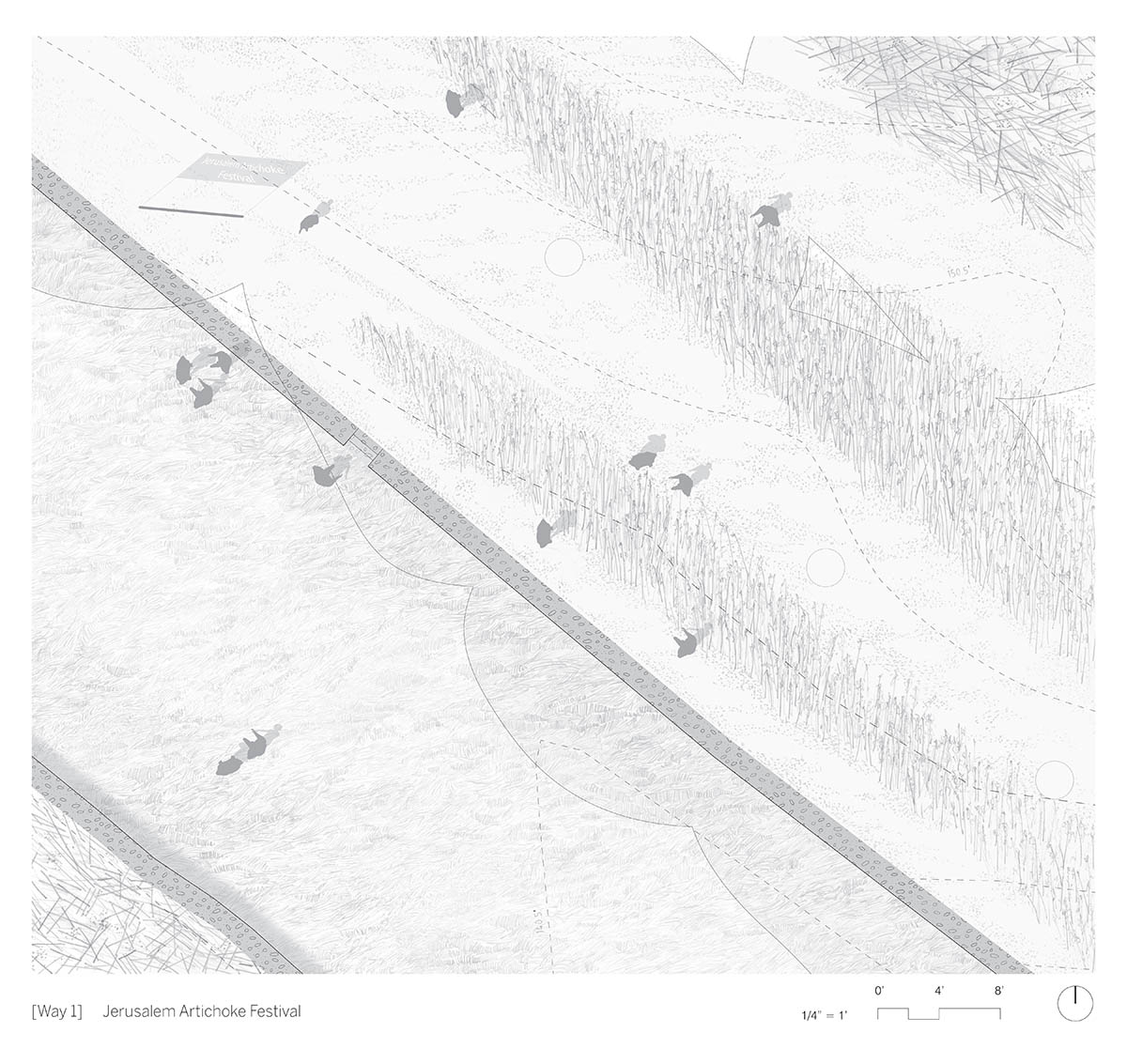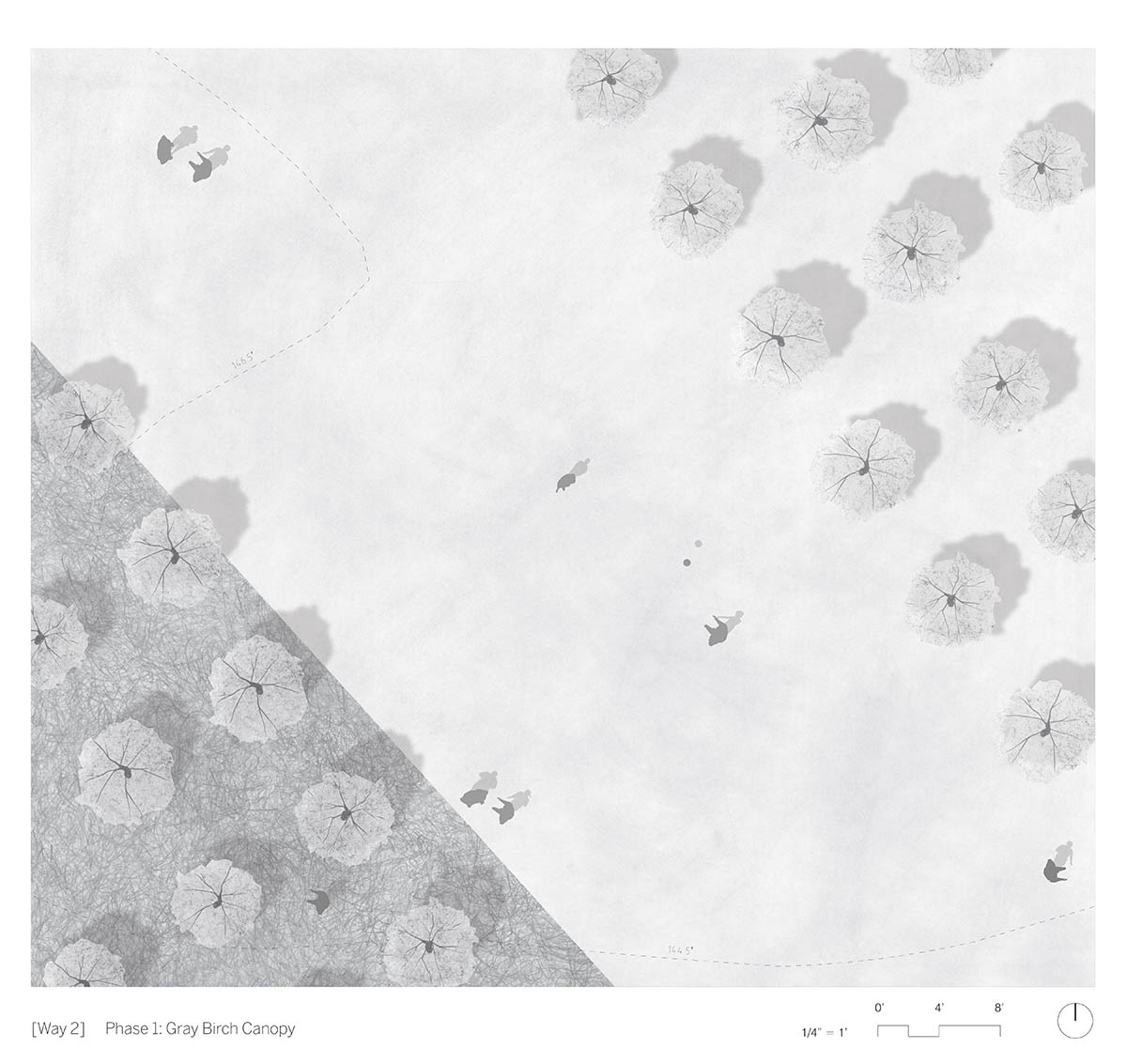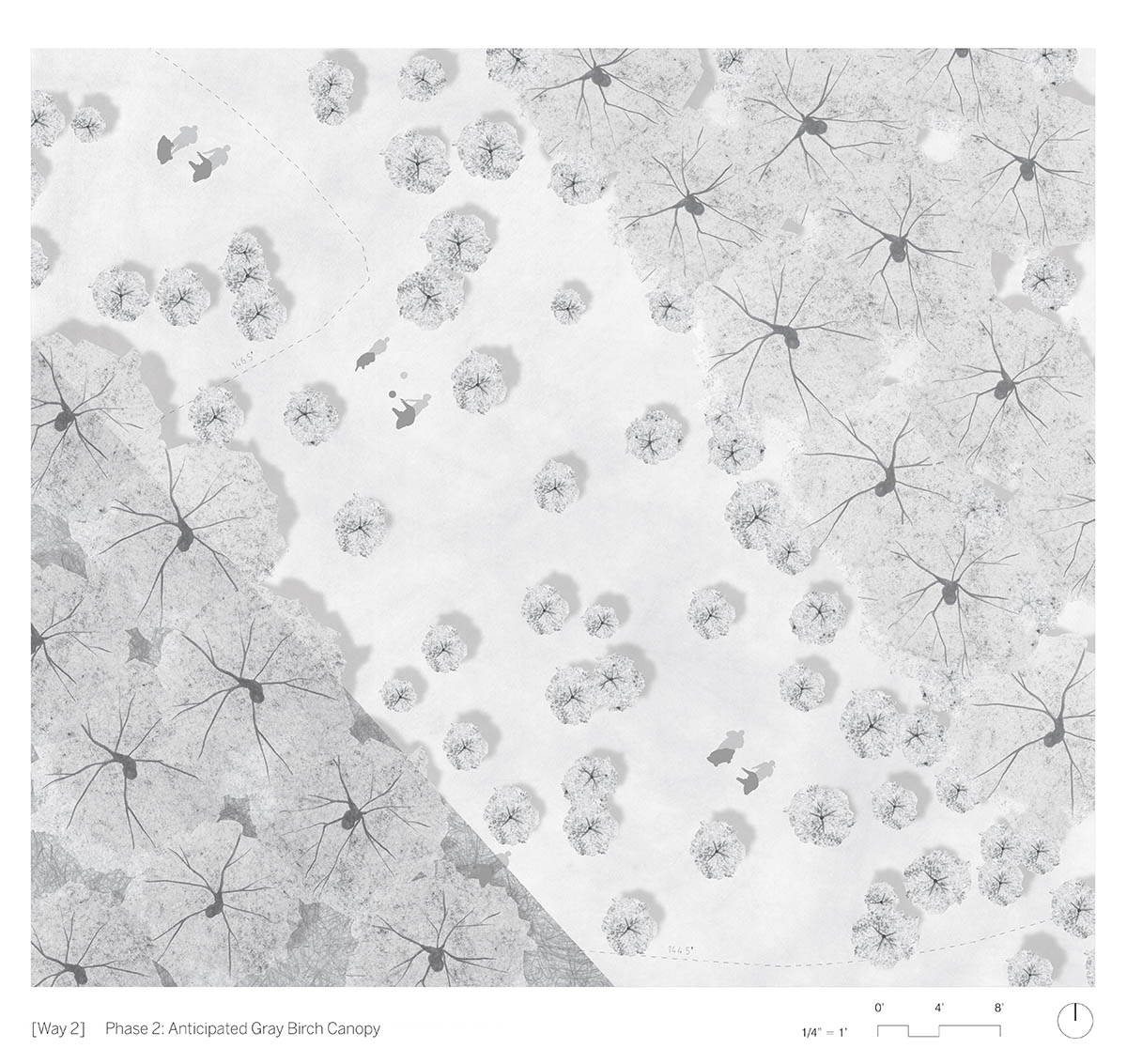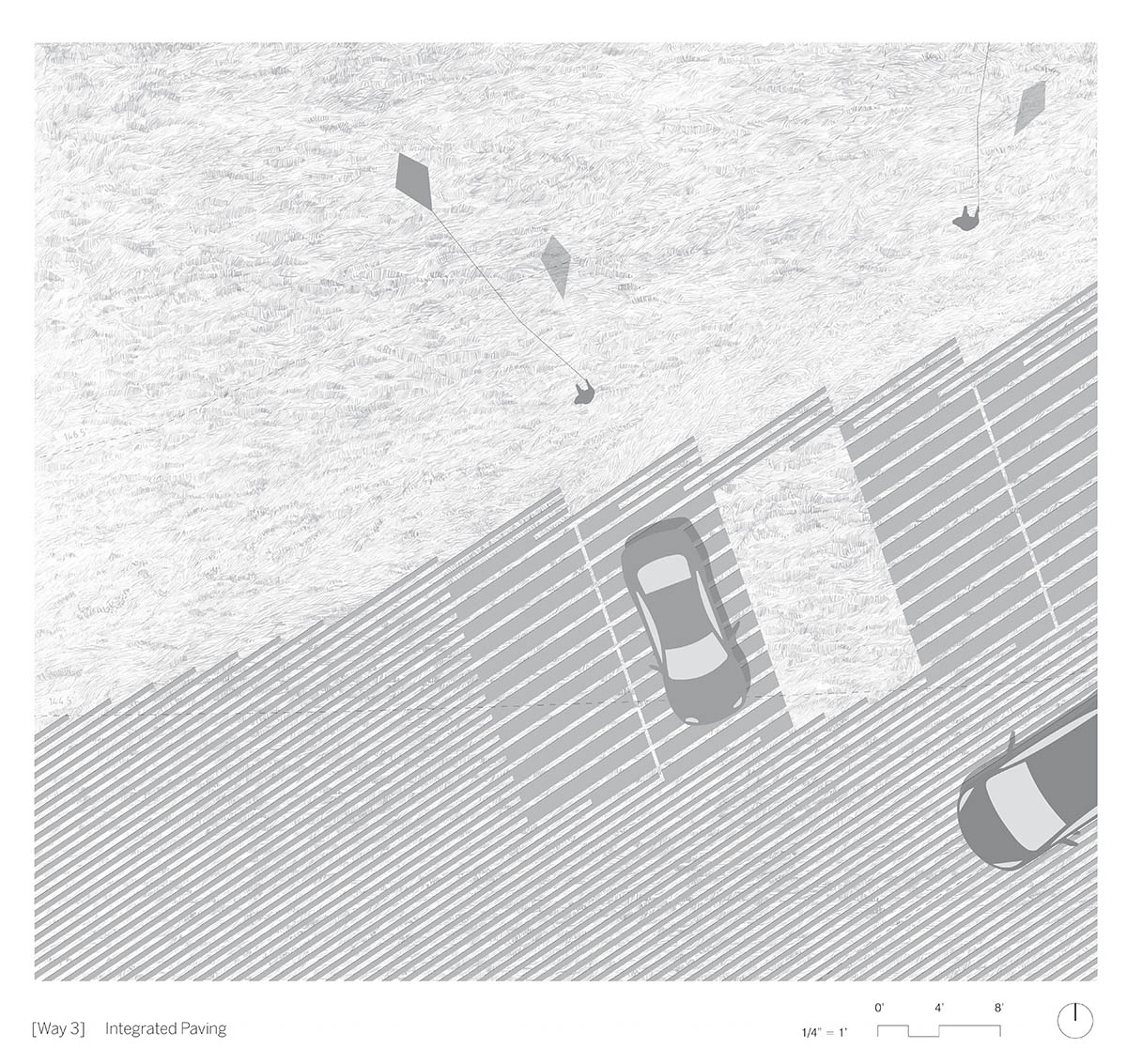Vegetation Orientation: Franklin Park’s Way
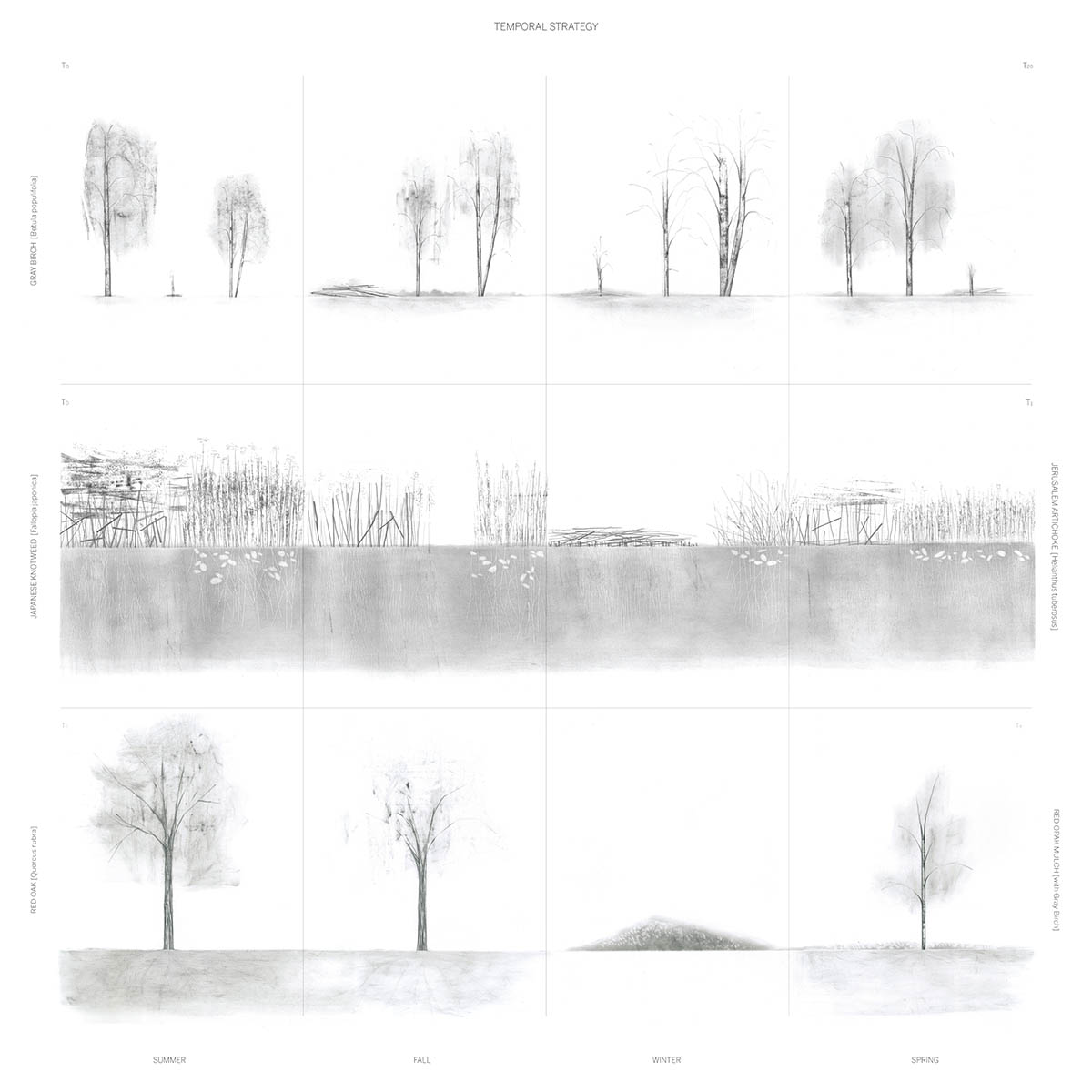
by Chelsea Dombroskie (MLA I ’21)
Franklin Park is challenging to navigate. Vegetation Orientation asks how a design can bring clarity to a disorienting area of the park, a clarity that is embedded in the site and integrated with existing conditions. The result is a series of wayfindings defined by vegetation. The ways have their own micro-identities and in the context of the larger park, act as a threshold between existing zones of activity.
Way 1 is an observation of invasive Japanese Knotweed that currently exists in patches on site and is difficult to eradicate. Within this way Knotweed can stay, expand in the specified areas and have an identity that is reframed positively and can be maintained through harvesting driven by community engagement. Young shoots cut in early spring are edible. Jerusalem Artichoke, edible and believed to balance Knotweed’s invasive qualities, will be introduced along this way.
Way 2, is an expansion of gray birch that currently exists in small numbers on site. As the dominant red oak canopy in the park nears its end, mulch can be made to support the new birch life. Seeds need exposed ground to take root; a mulching pattern, will allow the birch to create a variety of spacing and experiences along this way.
Way 3 proposes directional breaks into the exiting parking lot asphalt to allow grass between, linking grassy playstead to grassy golf course. An integrated parking lot in which edges become diffused, better support the social space it already is.
Throughout this project I asked how our understanding and energy toward invasive species can shift from worthless to valuable. Olmstead is believed to be an early supporter of knotweed’s introduction into the US, is it our responsibility then to eradicate it or adapt with it? Can the dying canopy can support new plant growth? How can existing conditions be reframed to better support community use of the park?
